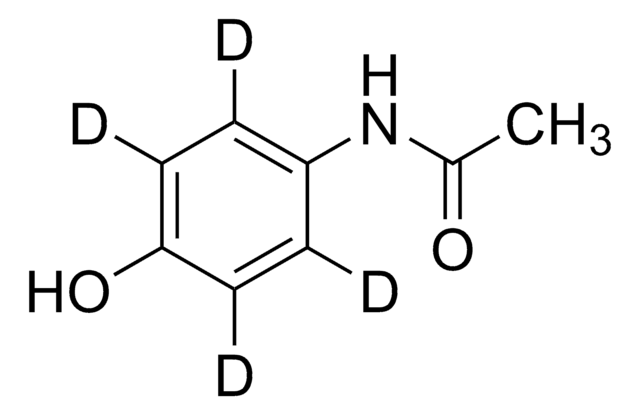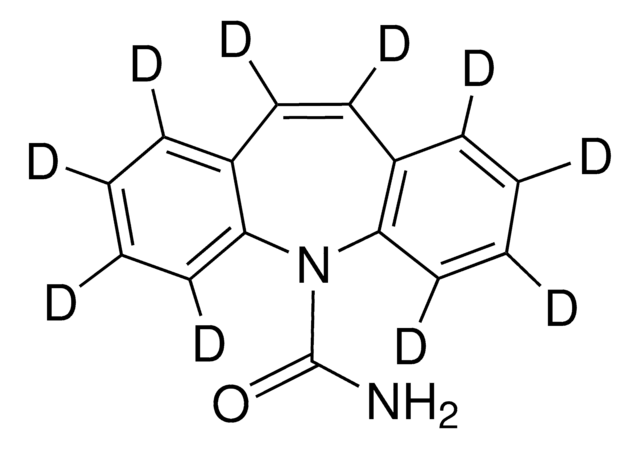Kluczowe dokumenty
55264
Ibuprofen-d3
analytical standard
Synonim(y):
α-Methyl-d3-4-(isobutyl)phenylacetic acid
About This Item
Polecane produkty
klasa czystości
analytical standard
Poziom jakości
czystość izotopowa
95 atom % D
Próba
≥98.0% (HPLC)
okres trwałości
limited shelf life, expiry date on the label
metody
HPLC: suitable
gas chromatography (GC): suitable
Zastosowanie
environmental
forensics and toxicology
pharmaceutical (small molecule)
Format
neat
przesunięcie masy
M+3
ciąg SMILES
[2H]C([2H])([2H])C(C(O)=O)c1ccc(CC(C)C)cc1
InChI
1S/C13H18O2/c1-9(2)8-11-4-6-12(7-5-11)10(3)13(14)15/h4-7,9-10H,8H2,1-3H3,(H,14,15)/i3D3
Klucz InChI
HEFNNWSXXWATRW-HPRDVNIFSA-N
Opis ogólny
Zastosowanie
Opakowanie
Zastosowanie
część zamienna
Hasło ostrzegawcze
Warning
Zwroty wskazujące rodzaj zagrożenia
Zwroty wskazujące środki ostrożności
Klasyfikacja zagrożeń
Acute Tox. 4 Oral - Eye Irrit. 2 - STOT SE 3
Organy docelowe
Respiratory system
Kod klasy składowania
11 - Combustible Solids
Klasa zagrożenia wodnego (WGK)
WGK 1
Temperatura zapłonu (°F)
Not applicable
Temperatura zapłonu (°C)
Not applicable
Środki ochrony indywidualnej
dust mask type N95 (US), Eyeshields, Gloves
Wybierz jedną z najnowszych wersji:
Certyfikaty analizy (CoA)
Nie widzisz odpowiedniej wersji?
Jeśli potrzebujesz konkretnej wersji, możesz wyszukać konkretny certyfikat według numeru partii lub serii.
Masz już ten produkt?
Dokumenty związane z niedawno zakupionymi produktami zostały zamieszczone w Bibliotece dokumentów.
Klienci oglądali również te produkty
Chromatograms
application for HPLCsuitable for GCNasz zespół naukowców ma doświadczenie we wszystkich obszarach badań, w tym w naukach przyrodniczych, materiałoznawstwie, syntezie chemicznej, chromatografii, analityce i wielu innych dziedzinach.
Skontaktuj się z zespołem ds. pomocy technicznej










